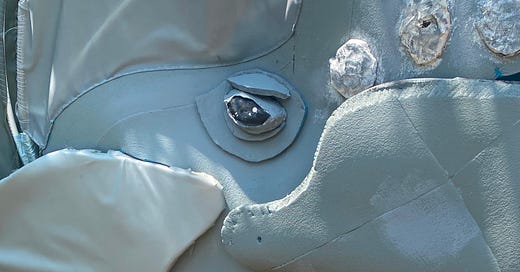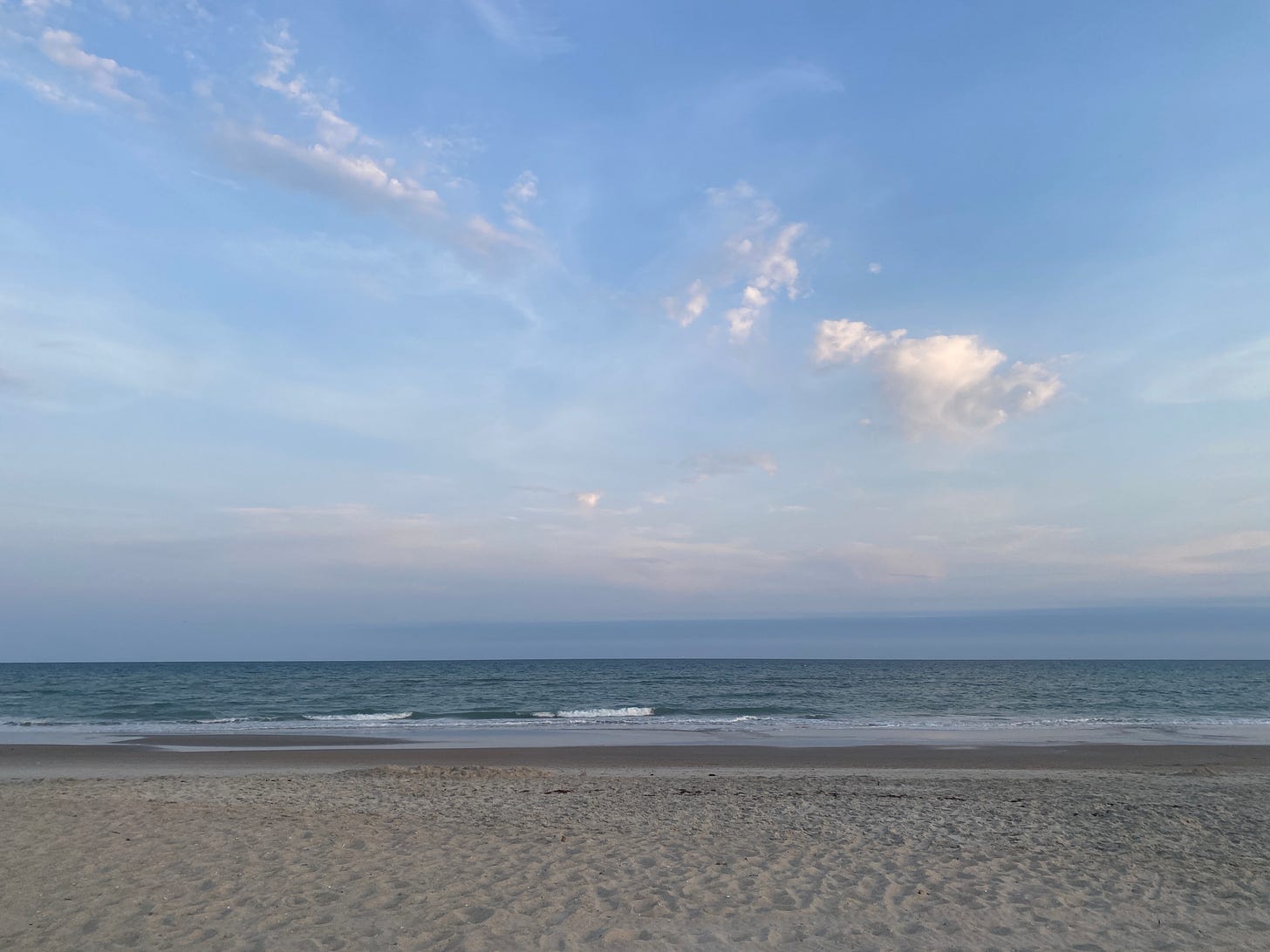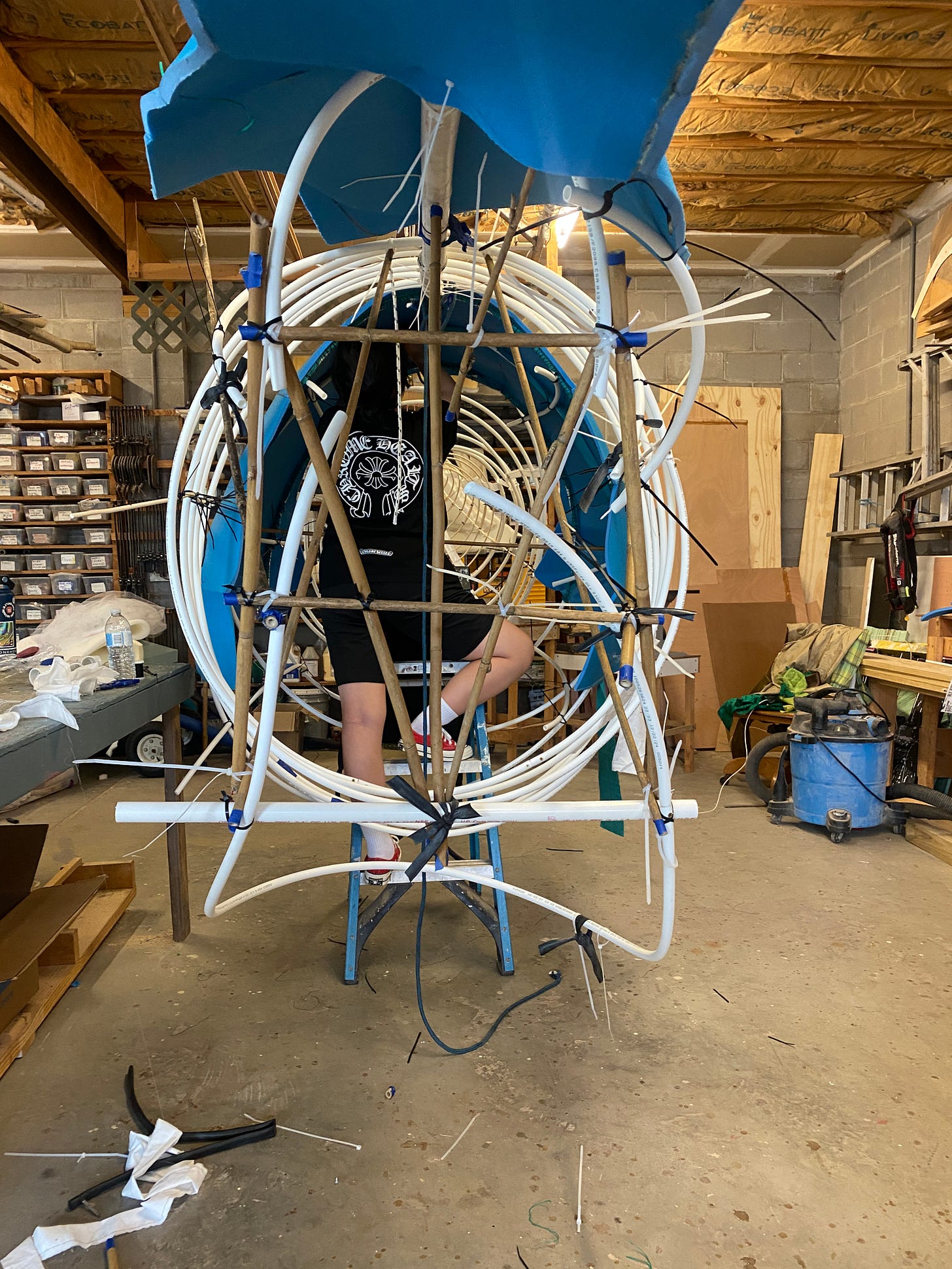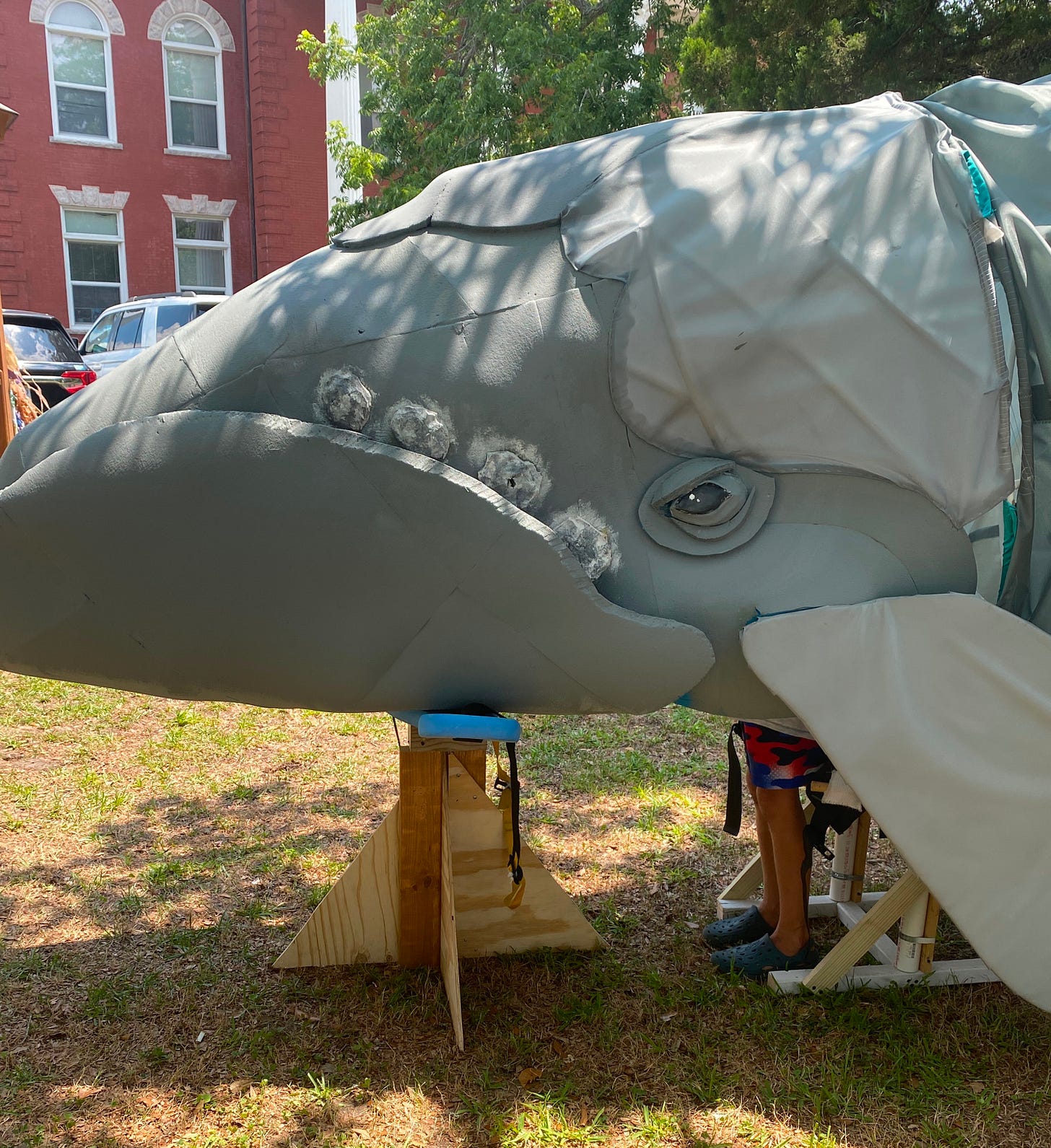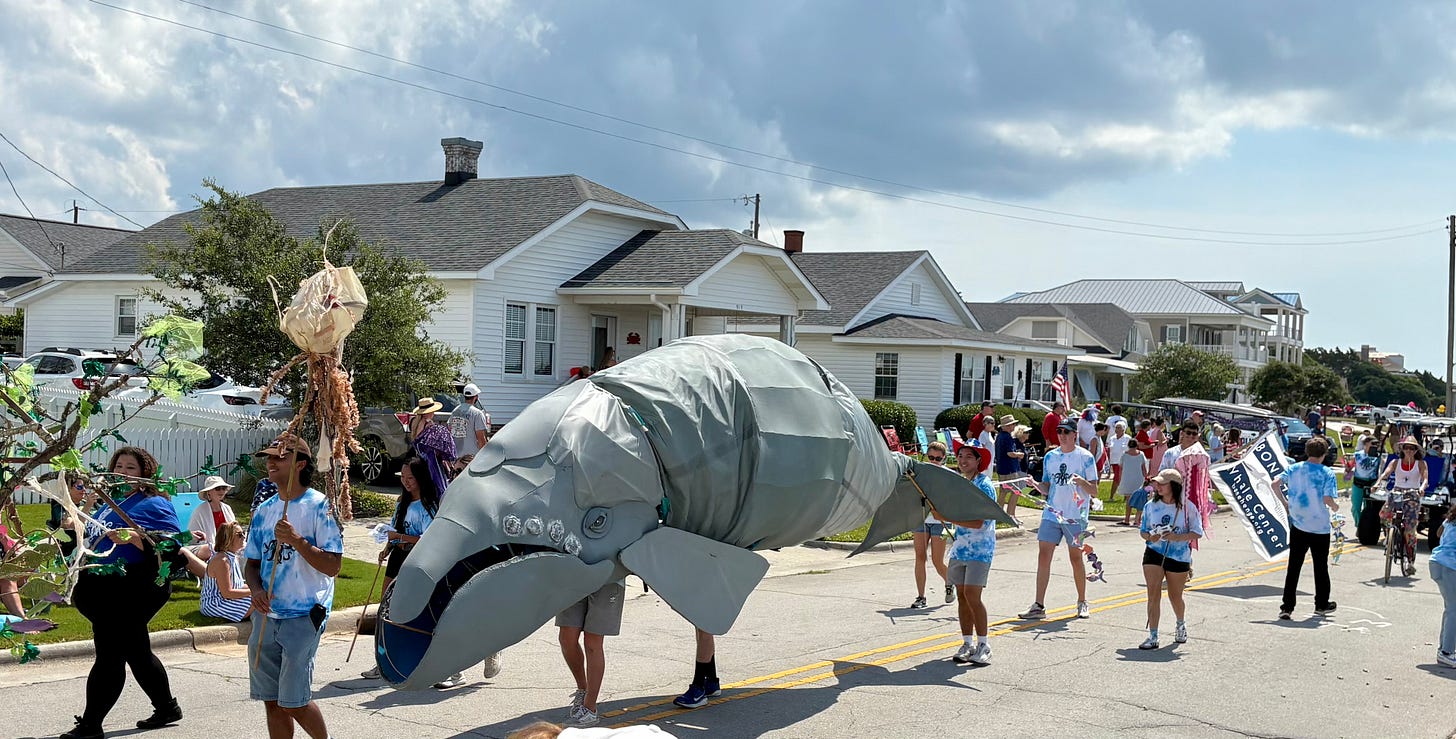Hello there, deep divers!
I’ll be honest that I’ve been thinking of writing a lot these past couple months. Thinking and thinking, and then realizing I haven't written or shared. Sleep, work, self doubt, grad school recovery, worldly heaviness keeping me from being here. And also a shrinking feeling that I’m curious about… that my voice isn’t important right now. While I coach myself through the harshness of my innerworld, I also know there is some truth here. The voices of Palestinians and those putting their lives on the lines to stop the genocide, of people being violently attacked and deported by ICE, of Black and brown people exhausted by the same shit killing their communities, – these are voices that need to be heard, respected, and followed. The global majority is crying out, screaming, dancing, and demanding for the dismantling of violent, supremacist systems and for the space, resources and support to create a world that can hold many worlds.1
I hope you’re finding a way to stay abreast of movements for justice, liberation, and well-being of all in your own communities. It is the work of all of us, and nothing is too small. Care and rest is a part of it, too.
It’s in this energy that I share about a project I’m really proud of and is much, much bigger than me in many ways. Thank you full moon in capricorn this week for extending a generous hand back into this space of deep shift. This is a meandering reflection on my past couple months, offered with hope that something here sparks connection, inspiration, and breath.
In my shapeshifter fashion, I found myself in Beaufort, North Carolina the past two months building a giant parade puppet. I said yes to an internship opportunity just after graduating from my MFA and got to be a part of a team engaging puppetry with climate resilience initiatives. A dream come true that I didn’t even know I had.
I want to share a bit of our process with you because 1. I’m really proud of our puppet, like just wait until you see it!! and 2. there are scientists, educators, and communities doing incredible work to nurture resilient communities in the face of climate crises, and I want you to know about it. Just knowing that this work exists, let alone being a part of it, grounds me and offers tangible hope amidst the grave reality of the current administration in the U.S. and the toll it is taking on the well-being of our environment, our bodies, and our community.
I’m gonna hone in on the 20-foot parade puppet we made of a Right Whale named Granite. Note: this project is a piece of a wider ecosystem of education, community engagement,2 and research and this reflection is my own perspective and associations from being a part of it.
Parades and Puppets as a way
Wait- you might be asking- what does building a big puppet and walking in a parade have to do with climate resilience or education?
It’s a good question. And a couple years ago, I would’ve been like: yeah that’s cute but not really useful. It’s not really doing anything. Seems symbolic and fun, but not practical.
And to that self, I say: I hear you. And, I also want to propose that creatively engaging with our ecosystem matters. That playful, exuberant expression of our love of ocean kin matters. That parades are an expression of what’s important to a community, and what might happen if ocean creatures take over 4th of July parades all over this country?
It’s impossible to know the full impact of a piece of art and performance once it is offered to the world. In the case of our 20 foot whale puppet– maybe it will spark someone’s love affair with Right Whales; maybe it will move someone else to get involved in whale conservation efforts; maybe it will inspire a child to tell their dad to slow down while speeding in their boat or stop their cousin from throwing trash out in the sea; maybe someone will start a community project to build a giant puppet for a creature that’s endangered in their own ecosystem. I don’t know but I like to ponder the possibilities, the beautiful mycelial network of impact and connection that can nurture curiosity, connection, and care for land, sea, and each other.
Our Process
During our process, my team– made up of undergrad college students and theater professor and puppetry artist, Torry Bend – worked alongside scientists and conservation professionals who collectively have decades of experience researching and advocating for the protection of dolphins, whales, and the well-being of the ocean at large. A dreamy collaboration that affirmed the expertise and experience that all of us brought to the table.
Though initially, I’ll admit I wasn’t sure what I was bringing to the group – I never built a giant puppet before and I haven’t taken biology since freshman year of high school. I found myself in a role I am familiar and skilled in ~ the glue that keeps the boat afloat. I brought the project coordination, group facilitation and embodiment skills that helps myself and others be flexible, steady, and moving towards our goal.
I brushed off my sewing skills and leveled up my power tool know-how. Keeping my hands busy in a workshop was a blessing after writing a masters thesis these past six months. Sewing the inside of the belly of the whale, stitching her foam skin to the structural rings that made her shape, sawing bamboo sticks – getting lost in these menial tasks scratched a special itch in my body-brain. more please, I whisper to the universe.
Everyone on our team was leaning into some kind of edge: learning about marine life, puppetry, and power tools. It was challenging and frustrating at times. We had resources but not an unlimited budget. For some folks it was their first time working in a workshop setting which was understandably uncomfortable at times. It’s hard to see the school for the fish, as they say. When you’re locked in on something really specific like the curve of a Right Whale’s lower jaw or the backpack for the middle belly puppeteer, it’s hard to see how its all going to come together. It was a dance of zoning in and stepping back to see our progress, day to day, week by week.
Meet Granite
Not only did we build a specific species of whale – a North Atlantic Right Whale– we designed our puppet to represent a specific, special whale who’s name is Granite.3 Granite is 27 year old Right Whale, a mother, who’s been sighted off the shores of North Carolina during their migration between florida and Canada in recent years. As far as scientists know, she is still alive and well today.
We learned about Granite from Keith, founder of Bonehenge who has an infectious passion for marine life, a commitment to preserving whale skeletons for education, and a special knack for telling stories. Keith consulted with us on the design of our parade puppet. We learn that Right Whales have these formations on their skin called callosities, rough callous patches that are inhabited by whale lice and barnacles. A whale is identified by their specific constellation of collosities which we included on our puppet of Granite. Full grown Right Whales are anywhere from 40-60 feet long. So at 20-feet in length, our puppet was the size of a baby Right Whale! They are baleen whales with a broom-like filtration system that allows them to eat tons of krill a day.
As a fierce advocate for ocean kin, Keith also shares some difficult stories about different species of whales who have been found ashore. He says that we/scientists don’t know exactly how old these whales can live because all the whale deaths that have been recorded have been due to human impact – boat strikes, entanglements, and plastic pollution. They are gravely endangered – only 370 left.
Bringing Granite to Land
There is something fantastical and challenging about bringing a massive, gorgeous marine mammal to land. How do we build something so large that humans can still maneuver? How can we convey the grace of this creature gliding through the ocean with ease?
It’s an impossible task in many ways–usually a whale on land means that they’ve died. And yet we went for it, bringing a vibrant version of Granite to land. Puppetry offered a beautiful form to manifest a representation of her that felt realistic and also asked us to suspend disbelief of a whale walking on land. It took a village to birth her and another village to guide her through the parade.
As a dancer/ improviser/student of body intelligence, I am in awe with the ways puppetry asks us to move and communicate with one another and the puppet themselves. Puppetry invites us to embody something or someone else– in this case, a creature much bigger than any one human. Three humans took on Granite’s form– one at her jaw, one in her belly, and another at her tail. Embodying a giant puppet demands communication, verbal and nonverbal, to move as one. It’s messy, sweaty and certainly much more clunky than how Right Whales actually move, and I think there’s something humbling about that.
As Granite walks/swims down Front Street, hundreds of children and adults OOoOooo, awwww, squeal, and clap. This majestic, intelligent, and graceful creature draws especially loud cheers in between scout troupes and military vehicles.
I wonder about the impact of being in the presence of an ocean creature that no one, except very specific researchers, would otherwise be able to see in person. How might being in the presence of Granite cultivate awe and respect in a way that facts and information cannot? Could our enthusiasm for land, sea, and kin grow louder than the allegiance to nation state?
Maybe a big leap, but I’ll toss it out into the ocean of possibilities.
I offer a bow to Granite and the villages who brought her life on land. May she grace us with many more walks to come. #LongLiveGranite
My time at the Atlantic has come to a close for now. I have big gratitude for the experience on many different planes. I’m certain more water, ocean, whale reflections will likely spill out over time.
with big love and breath,
em
A gesture to the work of feminist, indigenous, anti-capitalist, Mexican collective Zapatistas: “The Zapatistas are working towards constructing what they refer to as ‘Un Mundo Donde Quepan Muchos Mundos’ (‘A World Where Many Worlds Fit’) by emphasizing the dignity of ‘others,’ belonging, and common struggle, as well as the importance of laughter, dancing, and nourishing children.” https://globalsocialtheory.org/topics/zapatismo/
We collaborated with folks involved with the Ready, Set, Resilience curriculum - put together by middle school teachers and faculty from the Duke marine lab in response to increasing storms and climate change impact on the coast. If you’re an educator or curious, you could check out their website.
The New England Aquarium website was a great resource for us in our whale research. They support significant research and conservation efforts for the North Atlantic Right Whale.

